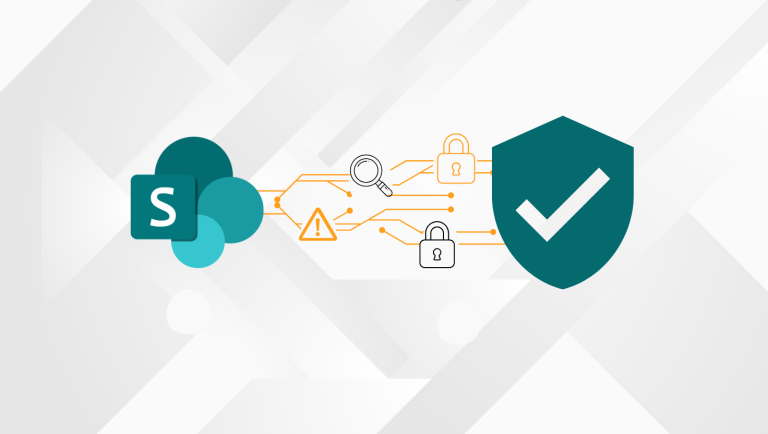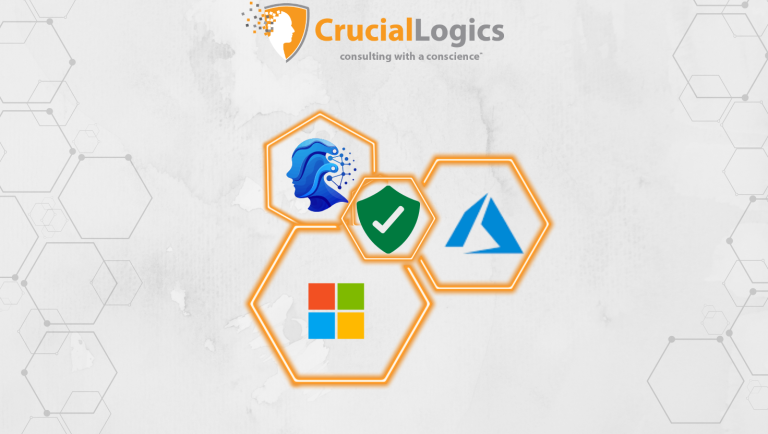Microsoft Copilot governance helps organizations safeguard the integrity and confidentiality of critical data while ensuring compliance and improving data quality. Yet, despite its enormous potential, successful adoption remains a challenge. Microsoft’s 2024 Work Trend Index reveals that while 79% of business leaders see AI as essential to competitiveness, 59% admit they lack a clear implementation plan.
This gap between urgency and readiness underscores the need for a governance-first approach to Copilot. In this article, we’ll examine the top risks of poor Copilot governance and share practical strategies to help organizations deploy it more securely, effectively, and efficiently.
Common Problems in Copilot Implementation
Without proper AI governance, organizations risk misaligned adoption, compliance gaps, and unjustified ROI.
1) Data Exposure Through Oversharing and Permissions Drift
Over-permissioning and data leakage remain among the most critical risks in Microsoft Copilot deployments. In SharePoint, permissions are often granted too broadly—sometimes to entire groups or through misconfigurations—leading to unintended access. Microsoft’s 2023 State of Cloud Permissions Risks Report highlights the scale of the problem: only 1% of granted permissions are actively used, leaving 99% unused or inactive, but still open for exploitation. This drift increases the chance of confidential data, such as merger and acquisition plans, being exposed to unauthorized users.
The challenge is compounded by Copilot’s ability to aggregate and surface information across multiple sources. For example, if a user asks Copilot to summarize “our top investment opportunities,” the AI may pull from forecasts, private portfolios, and draft strategy decks. On their own, these documents might appear harmless. But when synthesized into a single AI-generated response, they could reveal sensitive financial plans or client data. If that output is then shared externally, it can escalate into a compliance violation or regulatory breach.
2) Compliance Risks and Regulatory Violations
Frameworks like GDPR and CPRA require strict purpose limitations: personal data must be collected and used only for specific, explicit, and legitimate reasons. Yet defining and enforcing those limitations during development and model training is rarely straightforward. Copilot for Microsoft 365 grounds responses in contextual information from emails, documents, and other resources. In doing so, it may surface data for purposes beyond its original intent, putting organizations at risk of legal and regulatory penalties.
The challenge is especially acute in regulated industries such as healthcare and financial services. Sensitive information can appear in AI-generated summaries or suggestions, even if the user never accessed the source files directly.
This complicates regulatory compliance. It is no longer enough to log who opened which document; organizations must also track who viewed Copilot’s synthesized content and what information was exposed.
3) Technical Infrastructure and Integration
Deploying Copilot is not always seamless, so the first step is to review your IT environment and identify where it can add value without creating unnecessary risk. Effective governance begins with mapping sensitive data across Microsoft 365 — not just obvious repositories like SharePoint and OneDrive, but also hidden areas such as Teams chats, email attachments, and archived content that Copilot can still access.
From there, define clear use cases for each department, recognizing that the same AI action may be safe in one context and risky in another. Beyond technical restrictions, provide guidance to users on when Copilot is suitable for routine tasks and when human oversight is required for sensitive matters.
4) Cost and Licensing Management
Copilot subscriptions add cost on top of existing licensing fees. Without oversight and measurable productivity gains, expenses may escalate without delivering proportional value. The per-user price also makes organizations cautious about large-scale adoption without clear ROI justification.
Monitoring usage metrics is essential to identify where Copilot delivers the most value. By prioritizing high-impact use cases and aligning subscription plans with actual business needs, organizations can effectively manage costs and ensure that investments yield meaningful outcomes.
5) Identity and Access Management Risks
Identity and access management present another critical risk in Copilot deployments. Copilot inherits user permissions, which means weaknesses in account security, such as overprivileged roles, inadequate MFA, or misconfigured Conditional Access policies, can be exploited. If a privileged account is compromised, sensitive data across the environment may be exposed, and Copilot’s ability to aggregate and surface information can amplify the impact. Strong identity governance, strict least-privilege enforcement, and continuous monitoring are therefore essential to minimize the risk of unauthorized access.
How to Avoid the Risks of Poor Copilot Governance
The following pillars form the foundation for responsible, secure, and compliant use of Copilot across the enterprise.
1) Define Clear Governance Policies for Microsoft Copilot
Strong Copilot governance begins with clear, documented policies that guide how your organization manages data, access, compliance, and user activity. These policies should serve as the framework for how Copilot interacts with information across Microsoft 365.
Start with data management. Classify information into distinct categories—confidential, sensitive, and public—so Copilot can treat each appropriately. Establish retention rules that define how long different data types are stored, and incorporate protective measures such as encryption and anonymization. Access controls should be closely aligned with these classifications to ensure compliance and minimize exposure risks.
Equally important is the discovery and mapping of sensitive data. Effective governance requires a thorough understanding of the data that exists in your environment, its usage, and its location. This extends beyond traditional file inventories to include SharePoint document libraries, OneDrive folders, Teams chat histories, email attachments, and even calendar entries. Pay particular attention to archived content, such as old project files or historical communications, which users may have forgotten but Copilot can still surface. These overlooked data sources often contain sensitive information that could create risks if exposed in current contexts.
Define Specific Use Cases for Copilot
Broad, generic policies are rarely effective in AI governance. The same action can be appropriate in one context yet highly risky in another. To address this, establish clear use cases that outline where Copilot adds value and where its use should be restricted.
For example, customer service teams might safely rely on Copilot to draft email responses or summarize client interactions, but they should not use it to access financial records or internal strategy documents.
Similarly, executive assistants may need Copilot to generate calendar insights and meeting notes, but access to confidential HR discussions or forward-looking financial data should remain off-limits.
Comprehensive Access Management
Managing who can access what and when is central to protecting sensitive data and maintaining compliance. Without proper controls, the risk of data exposure, permission sprawl, and regulatory violations is widened.
Access reviews should not be treated as a one-time exercise. Establish ongoing review mechanisms to ensure permissions stay current as roles evolve. Begin with tenant-wide visibility to understand who has access to what across your Microsoft environment.
When employees leave or transition into new roles, access must be updated immediately. A resilient Copilot governance framework includes streamlined offboarding processes that revoke permissions without delay. Departing users should be removed from shared workspaces and restricted from sensitive tools, while role changes should automatically trigger a review to ensure access aligns with updated responsibilities.
Foster A Copilot Governance Culture
Building a resilient governance framework is not only about policies and tools, but also about people. A strong culture of governance must be valued across every level of the organization.
Governance works best when it is shared. Instead of pushing out top-down directives, involve employees in shaping policies. This encourages ownership and makes adoption more natural.
Educate teams on the risks of oversharing and remind them regularly how shared assets are monitored. Where possible, empower users to manage their own access permissions and review shared content.
It is also important to recognize when collaboration tools begin to drift into uncontrolled content hubs. Regular audits can help flag outdated access or irrelevant material. By enabling users to clean up and consolidate content, you can maintain a digital environment that is both compliant and manageable.
Implement Effective Training Programs
Even the most sophisticated governance framework will fall short without proper user education. Governance is not just a technical issue—it is a people issue. Practical training ensures everyone understands their role in maintaining a secure and compliant Copilot environment.
Training should be hands-on and directly tied to everyday workflows. Walk users through your Copilot governance policies in simple, relatable terms. Highlight best practices for data access, sharing, and usage, and tailor examples to each role. Scenario-based learning is especially effective, showing how governance lapses can lead to real risks and how to prevent them.
Governance is never static. As your organization and technology evolve, so must your training. Deliver regular refreshers through short modules, videos, or live Q&As to keep users current on new policies and tools. Just as importantly, create a feedback loop. Encourage users to raise questions, share challenges, and suggest improvements. Their input strengthens governance practices and reinforces shared accountability.
Conclusion
Microsoft Copilot is a powerful tool, but with great power comes enormous responsibility. The features that make Microsoft Copilot a productivity booster also make it a security risk if not configured correctly.
With the right approach to permissions, data governance, and user training, you can leverage all the benefits of Microsoft Copilot without much risk.
At CrucialLogics, our security philosophy centers on helping you make the most of the Microsoft technologies you already own. By reducing reliance on disparate point solutions, we help lower your attack surface while strengthening resilience. For a consultation on Copilot governance and AI security, speak with us to begin building a governance framework that protects your business.






